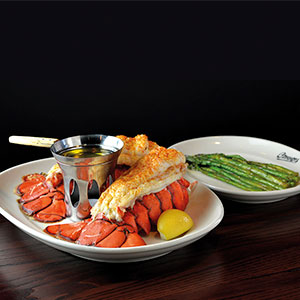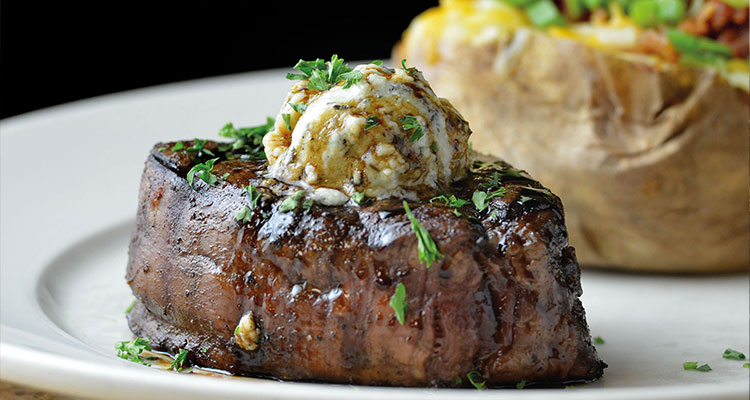Connor Concepts manages two of the Southeast’s top award-winning restaurant chains
Well done, medium, or rare? It’s pretty uncommon to meet a meat eater who doesn’t have a pre-loaded, reason-driven response to how they like their steak to be cooked. It’s one of the most simplistic meals to look at, but that doesn’t mean there’s anything average about it. This is something that Mike Connor, President and CEO, and his team have been demonstrating around the southeastern states for over 30 years.
Brand variety

Mike found himself in the hospitality industry while studying at the University of Tennessee, in a restaurant called Steak and Ale. This was where he obtained his first managerial position, working alongside the Founder, Norman Breaker. Norman is considered to be a godfather of sorts in the casual dining sector, under whom many prevalent restaurateurs have established their careers.
“So, I had a considerable amount of restaurant experience, supporting and creating other brands, before bringing the Connor Concepts group (CC) to life,” Mike starts. “It started with The Chop House, back in 1992, which we designed to be a polished, casual-dining experience, primarily focused on steaks. We were aiming for it to be slightly above the bar set by Outback, our main competitor at the time, whilst offering a less-fancy alternative to the likes of Fleming’s. After a burst of initial growth, there was a temporary lull, however we now have ten of those units across Georgia, Ohio, and Tennessee.
“In 2004, we established the marginally more formal Connors Steak and Seafood (CSS) with the intention of competing against ourselves. We wanted to transfer the premium quality of our steaks, while introducing a delicious new seafood range including a number of high-ticket items. In terms of the atmosphere and feel, we aimed to sit in the gap in between The Chop House and Fleming’s, but still offering a casual affair.
“In maintaining our strong variety, high specs, and reasonable prices, we have successfully developed a format that hits our niche perfectly, but we have still practiced a very gradual and controlled approach to growing the enterprise,” he says. “We have recently opened our sixth location in Louisville, Kentucky, and we have another one under construction in Alpharetta, Georgia. We’re at a good level, with 16 well-recognized restaurants, and plenty of potential for growth, which we’ll look to expand with two additions every year going forwards.”
Weathering the storm
Whilst offering customers a higher-end casual dining experience, both of the CC brands also practice a sensical approach to competitive pricing across their menus. “People are constantly telling us that they prefer to come to our places, rather than some of the other higher-end steakhouses because they love our atmosphere,” Mike details. “They love the culture we’ve created, and that’s before they get to look at our menus. We’ve got a fantastic lunch menu, which is reasonably priced, and our evening time offerings aren’t listed in your typical fashion. The menus feature categories for $11, $12, $13, $14, and $15 items, and there are so many options in each of the areas. You can also order from this selection during the lunch service, and it just works really well, that time of day is always very busy.

“We’ve got an incredibly broad range of dishes; whenever I go next door to eat the bar staff always say ‘I’m sure you don’t need a menu,’ but the fact is, I do. Especially in The Chop House, I want to order something different every single time. More recently, in CSS, I’ve
been going for the 8oz prime fillet, which is melt-in-your-mouth delicious. However, on the seafood side, the salmon on mesquite wood is also divine, the mesquite flavor carries so well, and if not, you can’t go wrong with the twelve-ounce, cold-water lobster tails.”
Over the last three decades, Mike has weathered the numerous different storms that have worried the industry. However, the most recent occurrences have required a different tactic. As he explains: “We made it through the recession in 2008, which was obviously a difficult one, but the events of the last few years have been different. We’d had a record February before COVID kicked in the following month, which obviously killed things until we got to the summer and places started to open up again. By the time we got to the fall, we were doing as much business as we had been in 2019, which just continued to grow.
“Into 2021, we were 20 percent up on 2019’s sales, but we simply couldn’t make any more money, with the increases in costs that we were facing in every avenue. So, we decided to take action, in a way that we had never done before. We ended up raising our prices four times over the year to catch up with things. We ended the year very well, especially on the revenue front. Profitability wasn’t quite where we’d like it, but it too was better than previous years.
“We don’t want to have to raise prices like that again, ideally it would only be once a year to match inflation,” he concludes. “But it’s been such an unusual time, watching prices everywhere steadily rise. It’s not even just on goods anymore, it’s also on the equipment and materials we require for investing in new locations. That’s the thing that made it very difficult for us, but at the same time we had to act in the face of adversity.”
